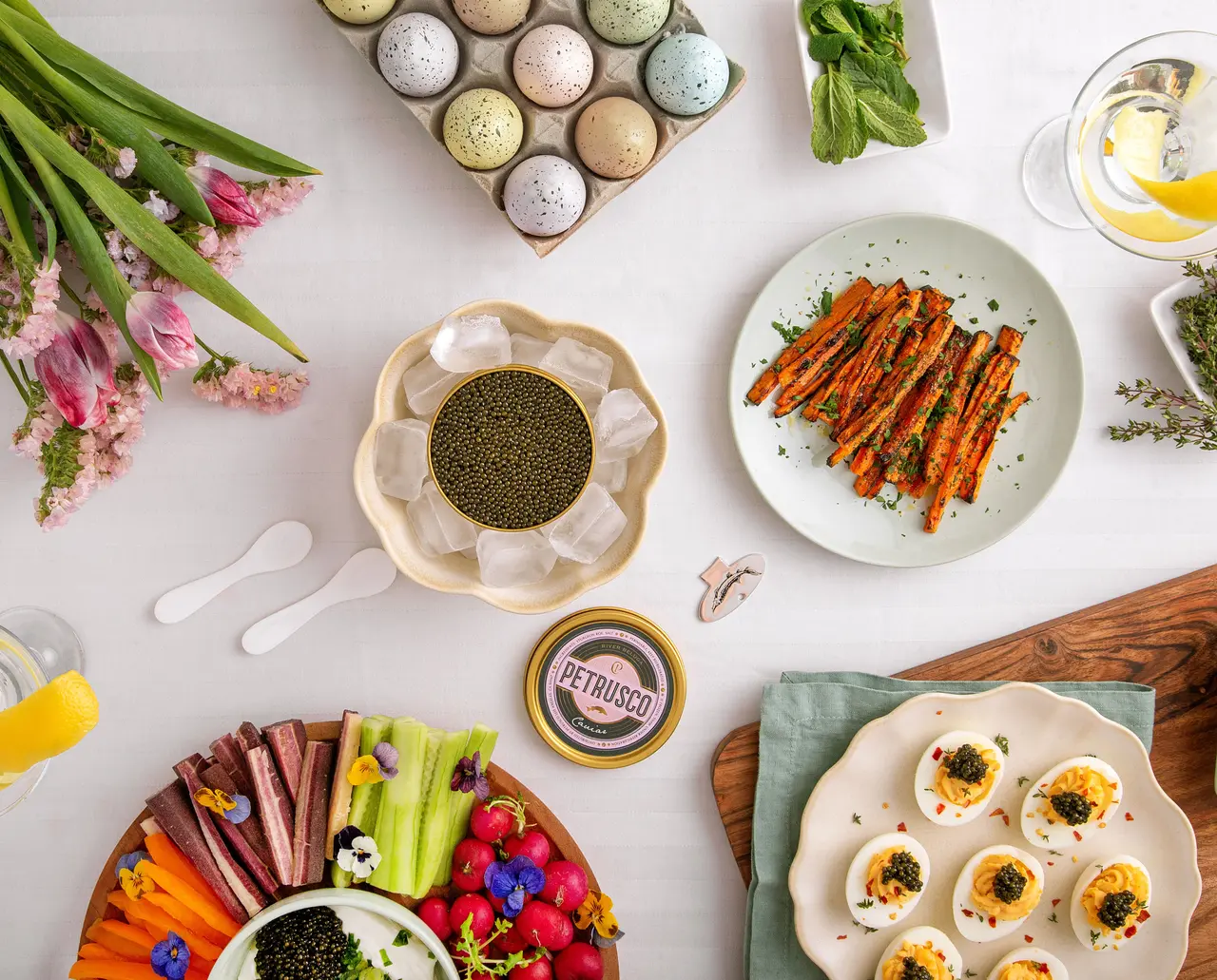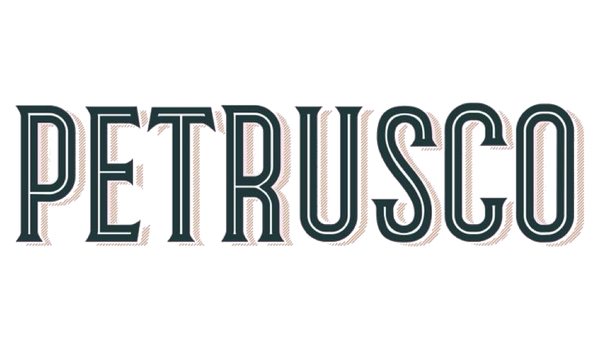Introduction to Luxury Caviar: A Culinary Delight
Caviar, the eggs of sturgeon fish, reigns supreme in the world of luxury foods. Picture it as nature’s tiny pearls, packed with flavor, ready to elevate your dining experience. Beluga, Ossetra, and Sevruga caviars are the crème de la crème in this opulent universe. Beluga, the rarest of them all, is famous for its large, silky pearls. It’s like the Rolls-Royce of caviar. Ossetra follows, with a nutty taste that varies depending on the waters the sturgeon calls home. It’s the caviar enthusiast’s dream. Then there’s Sevruga, with smaller grains but a bold flavor that punches above its weight. This trio forms the gold standard in caviar dining, offering a glimpse into a world where taste buds dance with every spoonful. Dive in, and let’s explore the luxurious depths of caviar together.

The Royal Beluga Caviar: Why It’s Sought-After
Royal Beluga Caviar sits at the top of the luxury food chain, fetching eye-watering prices and the adoration of gourmands worldwide. Why? It comes down to its rarity and unique taste. Harvested from the Beluga sturgeon, found primarily in the Caspian Sea, this caviar is famous for its large, silky pearls that offer an unparalleled buttery flavor with just the right hint of the sea. The Beluga sturgeon takes up to 20 years to mature, which means the caviar production is naturally limited, adding to its exclusivity. Moreover, strict fishing regulations to protect these ancient fish further tighten the supply, making Royal Beluga not just a dish but an experience. Its silky texture and rich, nuanced flavors make it easy to see why it’s the jewel in the crown of the culinary world.
Ossetra Caviar: A Taste of the Sea’s Richness
Ossetra caviar comes from the Ossetra sturgeon, an ancient fish that calls the Caspian Sea home. This delicacy varies in color, from deep golden to light brown, hinting at its rich flavor profile that expertly mixes nutty and briny tastes. It’s no wonder food lovers rank it highly. What sets Ossetra apart is not just its taste but its rarity. The Ossetra sturgeon takes its sweet time to mature, around 15 years, making every spoonful a luxury. And luxury has its price. Depending on factors like origin and maturity, a tin of Ossetra caviar can set you back anywhere from \(50 to \)100 per ounce. Yes, it’s a splurge, but for those who’ve savored it, Ossetra caviar is more than food; it’s an experience—a dip into the sea’s very essence. Worth every penny for those chasing extraordinary culinary moments.
Unveiling the Mystique of Sevruga Caviar
Sevruga Caviar stands out in the luxury food landscape. It’s from the Sevruga sturgeon, smaller than the Beluga and Ossetra siblings but packs a flavorful punch. This caviar is treasured for its fine, tender eggs and its rich, buttery flavor that aficionados describe as a true delight. The eggs are also smaller and more delicate, offering a unique texture. Coming from the chill waters of the Caspian Sea, Sevruga Caviar is a bit easier to come by, making it less expensive than its cousins. But don’t mistake lower cost for lesser quality. This caviar offers a gourmet experience that rivals its pricier counterparts. It’s a perfect starting point for those new to the world of caviar, providing a taste of luxury without breaking the bank. When you dip your spoon into a tin of Sevruga, you’re not just tasting fish eggs; you’re savoring centuries of culinary tradition and the essence of the sea itself.
How is Luxury Caviar Harvested?
Luxury caviar comes from the eggs of sturgeon fish, found mostly in the Caspian Sea. Here’s the drill: not any fish egg is caviar; only sturgeon. Farmers or fishermen catch the sturgeon. Then, the tricky part - they check if the fish are ready to give eggs. This needs skill, as doing it too early or late can ruin the quality. Once they find the perfect timing, they carefully remove the eggs. This step is crucial. Do it wrong, and you mess up the caviar’s taste. After the eggs are out, they clean them. Then, they add salt. This isn’t just any salt. It’s a special kind that enhances the caviar’s rich taste. They call this process “curing.” The eggs are then packed and ready to be sent off as the luxury caviar we know. This high-stake process is why luxury caviar is so pricey. It’s all about timing, technique, and the right touch.
The Intricacies of Caviar Grading and Quality
Understanding caviar grading and quality is like unlocking a treasure chest of taste and luxury. First, know that caviar is judged on several key aspects - size, color, texture, and flavor. The larger the eggs, the more valued the caviar is. As for color, it varies widely from light gray to deep black; the choice here is mainly about personal preference. Texture matters a lot; the eggs should be firm and separate easily, offering that sought-after pop when you bite into them. Now, flavor - it’s where true caviar stands out. Premium caviar bursts with a clean, slightly salty ocean flavor, without any fishy aftertaste.
Two terms you’ll come across are Malossol and Pressed. Malossol, meaning ‘little salt’, indicates a high-quality caviar with minimal seasoning, letting the natural taste shine. Pressed caviar, dense and intensely flavored, is made from broken eggs and is an acquired taste.
Remember, real luxury with caviar isn’t just in its price but in its grading and quality, highlighting the care and tradition behind harvesting and preparing these delicate pearls. Whether Beluga, Ossetra, or another variety, each has its unique characteristics that cater to different palates. Dive into the world of caviar, and you’ll find a rich blend of history, craftsmanship, and unrivaled taste.
Pairing Wine with Luxury Caviar: A Guide for Beginners
Pairing wine with caviar isn’t as hard as it seems. Think about matching the richness of the caviar with the body of the wine. Caviar, known for its luxurious and delicate flavors, complements well with wines that don’t overpower it. For Beluga caviar, with its buttery and creamy taste, go for full-bodied Chardonnay or a dry Champagne. These wines have enough character to stand up to Beluga’s richness without overshadowing its delicate flavor. Ossetra caviar, which is slightly nutty, pairs beautifully with a crisp Sauvignon Blanc or a sparkling Blanc de Blancs. These wines, with their zesty acidity, can cut through the caviar’s richness, enhancing its flavors rather than competing with them. Remember, it’s all about balance. You don’t want the wine to dominate the conversation; let the caviar shine, with the wine as its perfect support act.
Serving Luxury Caviar: Do’s and Don’ts
When serving luxury caviar, getting it right is critical. First, never use metal utensils; opt for spoons made of mother of pearl, bone, or even plastic. Metal reacts with caviar, altering its pristine taste. Keep the caviar cold until it’s time to serve. This isn’t just about preference—it’s a must. Use a bowl filled with ice to hold the caviar tin or jar to maintain its optimal temperature.
Now, onto serving. Caviar is best enjoyed in small amounts. This isn’t about being stingy; it’s about savoring the experience. A small dollop on a cracker or blini is all you need. Remember, caviar is the star. Avoid overpowering it with strong flavors like onion or egg. These can mask the delicate taste of the caviar. If you’re serving it as part of a dish, make it a simple one.
For a truly decadent experience, pair caviar with a dry champagne or a chilled vodka. The crispness complements the caviar’s richness beautifully.
Lastly, savor it. Luxury caviar is meant to be enjoyed slowly. Relish each bite and the unique flavors it offers. By following these simple do’s and don’ts, you’ll ensure your caviar experience is nothing short of spectacular.
The Ethical and Environmental Considerations of Caviar Production
Caviar, often seen as the pinnacle of luxury dining, comes with its own set of ethical and environmental issues you should know about. Harvesting caviar means collecting fish eggs, particularly from sturgeon species, which are facing threats due to overfishing. This practice has pushed some species towards the danger zone of extinction. Responsible producers now lean towards sustainable practices, such as aquafarming. Here, sturgeons are raised in controlled environments, reducing the strain on wild populations and ensuring a more ethical production cycle. This method also lessens the ecological impact, maintaining the balance of our rivers and seas. Additionally, certification labels like “sustainable” or “organically farmed” on your caviar can guide you towards making choices that are better for the planet and its inhabitants. So, next time you’re indulging in this delicacy, consider the source of your caviar. It’s a small step that can contribute to big changes in preserving our aquatic ecosystems and their majestic sturgeons.
Where to Find Authentic Luxury Caviar: A Buyer’s Guide
If you’re on the hunt for authentic luxury caviar, you’ve got to know where to look. Start with specialty stores or high-end gourmet shops. These places care about reputation, so they’re likely to have the real deal. You can also go directly to the source – reputable caviar producers. Many of them sell online, making it easier for you to get your hands on genuine products. Don’t forget to check out upscale restaurants that offer caviar on their menu. These places often sell their caviar for you to enjoy at home. Remember, when buying luxury caviar, the price is a good indicator of quality. Authentic caviar won’t be cheap, but it’s worth every penny for that unmatched taste experience. Keep an eye out for certification labels too – they’re your best friend in ensuring the caviar’s authenticity and sustainability.
